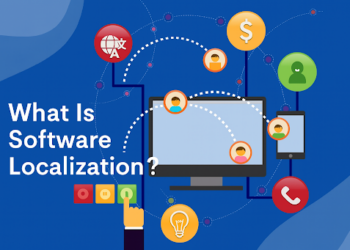In the fast-paced world of business, the way we conduct meetings has evolved dramatically. Gone are the days when meetings meant gathering in a single room with endless paperwork spread across the table. Today, technology is revolutionizing business meetings, making them more efficient, accessible, and effective. This blog post explores how technology can elevate your business meetings, offering practical tips and insights for integrating these tools into your workflow.
The Evolution of Business Meetings
Business meetings have come a long way from traditional boardroom settings. Historically, meetings were often constrained by geographical boundaries and required significant time and travel expenses. The advent of technology has shifted the paradigm, enabling seamless communication and collaboration regardless of location.
Initially, the integration of technology in meetings began with basic tools such as teleconferencing and email. These early technologies laid the groundwork for more advanced solutions. Today, the landscape of business meetings is dominated by sophisticated tools that facilitate real-time interaction, document sharing, and virtual presence.
This evolution reflects the growing need for businesses to stay competitive in a global market. The ability to connect with team members, clients, and stakeholders instantly and effortlessly has become a crucial aspect of modern business operations.
Advantages of Technology in Meetings
Efficiency
Technology streamlines various aspects of business meetings, from scheduling to execution. Tools like digital calendars and automated reminders ensure that all participants are aware of meeting times and agendas. This reduces the likelihood of missed meetings and improves overall efficiency.
Cost-Effectiveness
Traditional meetings often incur significant costs, such as travel expenses and venue rentals. By leveraging video conferencing and other virtual meeting tools, businesses can drastically cut down on these expenses. This cost-effectiveness enables companies to allocate resources more strategically.
Accessibility
One of the most significant advantages of technology in meetings is accessibility. Virtual meeting tools break down geographical barriers, allowing participants from different parts of the world to join in. This inclusivity fosters diverse perspectives and enhances decision-making processes.
Global Reach
In today’s interconnected world, businesses need to operate on a global scale. Technology enables companies to reach clients, partners, and employees across the globe effortlessly. This global reach opens up new opportunities for collaboration and growth.
Top Technologies Transforming Meetings
Video Conferencing
Video conferencing is one of the primary tools that have transformed business meetings. It enables real-time interaction between participants, regardless of location. This technology has become even more important in recent times as remote work becomes the new norm. Furnthermore, you can easily find video conferencing equipment for your business online. That way, you can ensure that your virtual meetings are as efficient and effective as possible.
Collaborative Tools
Collaborative tools such as Slack, Trello, and Asana facilitate seamless communication and project management. These tools enable teams to work together in real-time, share documents, track progress, and assign tasks, ensuring that everyone is on the same page.
Virtual Reality
Virtual reality (VR) is a game-changer in the realm of business meetings. VR platforms like Spatial and AltspaceVR create immersive meeting environments where participants can interact with 3D models, presentations, and each other, enhancing engagement and creativity.
AI Assistants
AI assistants like Siri, Alexa, and Google Assistant are increasingly being integrated into business meetings. These assistants can schedule meetings, send reminders, take notes, and even provide real-time translations, making meetings more efficient and productive.
Best Practices for Integrating Technology
Selecting the Right Tools
Choosing the right technology for your business meetings is crucial. Consider factors such as ease of use, compatibility with existing systems, and scalability. It’s essential to select tools that align with your specific needs and goals.
Implementing Technology
Successful implementation of meeting technologies requires proper planning and training. Ensure that all participants are familiar with the tools and understand how to use them effectively. Providing training sessions and resources can facilitate a smooth transition.
Managing Technology
Regular maintenance and updates are vital to ensure that your meeting technologies function optimally. Assigning a dedicated IT team or individual to oversee the management of these tools can prevent technical issues and disruptions during meetings.
Future Trends
The future of business meetings is undoubtedly exciting, with emerging technologies poised to further revolutionize the way we collaborate. Here’s a glimpse into some future trends:
Augmented Reality (AR)
Augmented reality (AR) is expected to play a significant role in business meetings. AR can overlay digital information onto the physical world, enabling participants to visualize data, models, and presentations in real time.
5G Connectivity
The rollout of 5G connectivity promises faster and more reliable internet connections. This will enhance the quality of video conferencing and enable seamless communication, even in remote areas with limited internet access.
Advanced AI Capabilities
AI is continuously evolving, and future advancements will bring more sophisticated features to business meetings. AI-powered analytics can provide insights into meeting performance, sentiment analysis, and personalized recommendations.

In the end, technology is transforming business meetings in ways we could only dream of a decade ago. From increasing efficiency and reducing costs to enhancing accessibility and global reach, the benefits are undeniable. By integrating top technologies such as video conferencing, collaborative tools, virtual reality, and AI assistants, businesses can elevate their meetings to new heights. Thank you for reading and good luck!







